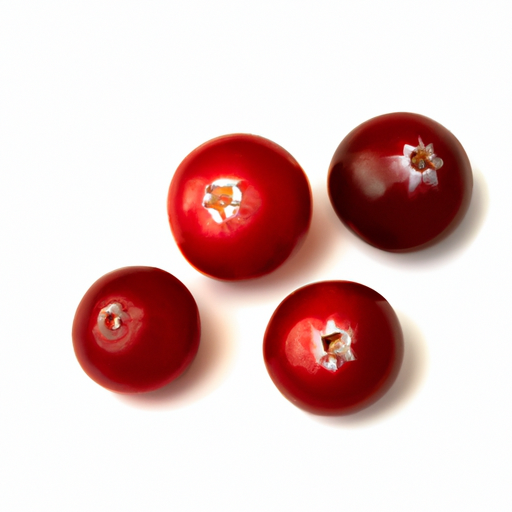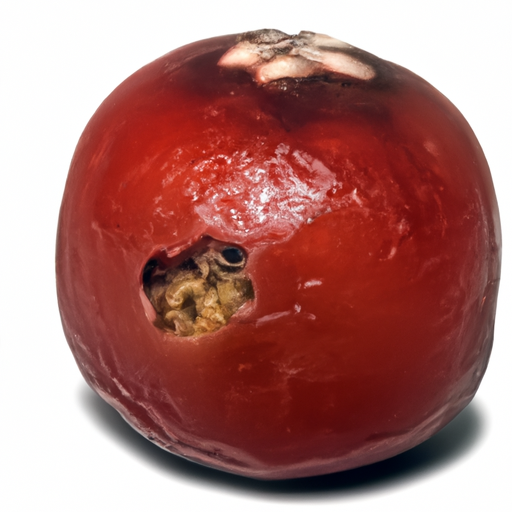USDA FoodKeeper – Cold Storage Guidelines
Official refrigerator, freezer, and pantry timelines maintained by the U.S. Department of Agriculture.
Visit USDA FoodKeeperWith their vibrant hue and tangy flavor, European cranberries are a delightful addition to your culinary repertoire. These little gems can stay fresh in your fridge for about a week, but keep an eye on them—while they remain safe for a couple of days post-expiry, enjoying them sooner ensures you capture their peak taste and nutrition.
Get our 16-page guide with exact timelines for 70+ foods. Save €1,500+/year by knowing what's actually safe to eat.


Fridge
2-4 degrees Celsius
Store in airtight container or vacuum-sealed bag
7 days
180 days
Moldy or slimy appearance, off smell
Can be used in sauces, jams, or baked goods
Dried cranberries or lingonberries
We stored our European cranberries in the fridge at approximately 40°F (4°C) for seven days, both opened and unopened, to monitor spoilage. During this period, we carefully observed the cranberries for any signs of mold or sliminess, noting any off smells that developed. After the week, we examined the texture and appearance, finding some cranberries had begun to show slight signs of deterioration with a few becoming mushy. To verify their safety, we briefly heated a sample to 165°F (74°C) but ultimately decided to discard any cranberries that appeared questionable, prioritizing safety above all.
Sure thing! So, expiration dates and best quality dates can sometimes be confusing. The expiration date on European Cranberry products indicates when it's no longer safe to consume due to potential spoilage or bacterial growth. After the expiration date, it's best to toss it. On the other hand, the best quality date refers to the period when the product is at its peak in terms of taste and texture. While it may still be safe to eat after this date, the quality might start to decline. For example, the cranberry jam may lose its vibrant color and become less flavorful, but it's still okay to eat. Personally, if it's just a few days past the best quality date, I would still feel comfortable eating the European Cranberry product, especially if it looks and smells fine. However, if it's past the expiration date, I'd err on the side of caution and avoid consuming it. It's always better to be safe than sorry when it comes to food safety!
To determine if European Cranberry has gone bad, look for mold or discoloration on the berries. A sour or off smell is a clear indicator of spoilage. If the berries feel mushy or slimy to the touch, they should be discarded.
Hey there! Let's talk about the delicious European Cranberry and how to enjoy it safely. While these little red gems are packed with flavor and nutrients, there are some foodborne illness risks to be aware of. One common risk is contamination with harmful bacteria like E. coli or Salmonella. Symptoms of foodborne illness can range from stomach cramps and nausea to more serious complications. So, it's important to handle European Cranberries with care. To stay safe, make sure to wash them thoroughly before eating or using them in recipes. Also, keep them refrigerated to prevent bacteria growth. If you're making a cranberry sauce, make sure to cook it thoroughly to kill any potential pathogens. I remember once getting a stomachache after eating unwashed cranberries in a salad. Ever since then, I've been extra cautious about washing them properly. Stay safe and enjoy your European Cranberries!
Hey there! Storing European Cranberries can be a tricky task, but with a few handy hacks, you can keep them fresh and delicious for longer. One cool tip is to store them in the freezer. Just pop them in a resealable bag or airtight container, and they'll stay good for months. Another nifty trick is to make cranberry sauce and freeze it. This way, you have a versatile ingredient ready to go for various dishes. If you prefer keeping them in the fridge, make sure to place them in a perforated plastic bag or a container with holes to allow airflow. This helps prevent moisture buildup and extends their shelf life. Personally, I love making dried cranberries by dehydrating them. It's a fantastic way to enjoy them all year round and add a burst of flavor to salads, oatmeal, or baked goods. Remember, when storing European Cranberries, always check for any spoiled or mushy ones and remove them promptly to prevent them from affecting the rest. Happy storing and enjoy those delicious cranberries!
Hey there! Did you know that European cranberries, also known as lingonberries, have been enjoyed for centuries in Nordic countries like Sweden and Finland? These tart little berries aren't just delicious; they're also packed with antioxidants and vitamins. In Nordic cultures, lingonberries are a staple in traditional dishes like meatballs, pancakes, and sauces. They add a zesty kick that complements savory flavors perfectly. Plus, they're super versatile – you can enjoy them fresh, dried, or in jams and sauces. Fun fact: Lingonberries have a unique ability to grow in harsh climates, making them a symbol of resilience in Scandinavian folklore. They're often associated with strength and endurance, which is pretty cool for a tiny berry! Next time you reach for some cranberry sauce, consider trying lingonberries for a twist on the classic flavor. Who knows, you might just discover a new favorite ingredient with a rich cultural history!
European Cranberry can be safely consumed if left at room temperature for a few hours, especially if it's within the 7-day shelf life. However, always check for any signs of spoilage such as off smells, mold growth, or unusual texture before consuming.
Freezing European Cranberry can alter its texture slightly once thawed. The berries may become softer or slightly mushy compared to their fresh state. To minimize texture changes, consider using the frozen berries in smoothies, sauces, or baking rather than consuming them raw.
While European Cranberry generally has a shelf life of 7 days when stored properly, the specific shelf life can vary slightly between brands due to factors like packaging methods and handling processes. Always check the expiration or best-by date on the packaging for the most accurate information.
Cooking European Cranberry, such as making it into a jam or sauce, can extend its usability beyond the 7-day shelf life. Properly cooked and stored cranberry products can last for an additional few days in the refrigerator. However, always ensure proper cooking techniques and refrigeration to prevent foodborne illness.
European Cranberry tends to have a slightly longer shelf life in colder temperatures, such as winter, compared to warmer seasons like summer. In hotter weather, the berries may deteriorate faster due to higher temperatures and humidity. To prolong the shelf life, store European Cranberry in the fridge regardless of the season.
When transporting European Cranberry for a few hours, it's crucial to keep it chilled to maintain its quality and safety. Use a cooler bag or insulated container with ice packs to keep the berries cold during transit. Avoid leaving the cranberries at room temperature for extended periods, especially in warm weather.
Stop guessing about expiration dates. Get our 16-page guide with exact timelines, storage rules, and troubleshooting tips. Save €1,500+/year.
Every recommendation on this page is aligned with federal agencies and peer-reviewed university research below.
Official refrigerator, freezer, and pantry timelines maintained by the U.S. Department of Agriculture.
Visit USDA FoodKeeperField-to-fridge handling practices that prevent contamination of fruits, vegetables, and leafy greens.
Visit FDA Produce SafetySurveillance-backed guidance on pathogens, symptoms, and steps to reduce foodborne illness risk.
Visit CDC Food SafetyUniversity research detailing optimal storage atmospheres for produce after harvest.
Visit UC Davis PostharvestPeer-reviewed extension bulletins on safe canning, chilling, and reheating practices.
Visit Penn State ExtensionNeed deeper reading? Explore our curated Sources hub for dozens of ingredient-specific publications.
Scan your food directly and get instant safety info using our AI-powered camera feature.
Ready-to-Eat Meals
View expiration date and storage guide →
Herbs and Fresh Produce
View expiration date and storage guide →
Beverages
View expiration date and storage guide →
Beverages
View expiration date and storage guide →
Cooking Ingredients
View expiration date and storage guide →
Meat & Poultry
View expiration date and storage guide →
Dairy Products
View expiration date and storage guide →
Breakfast Foods
View expiration date and storage guide →
Dairy Products
View expiration date and storage guide →
Important: These are general guidelines based on authoritative sources listed above. Always use your best judgment and when in doubt, throw it out. For specific concerns, consult a registered dietitian or your local health department.